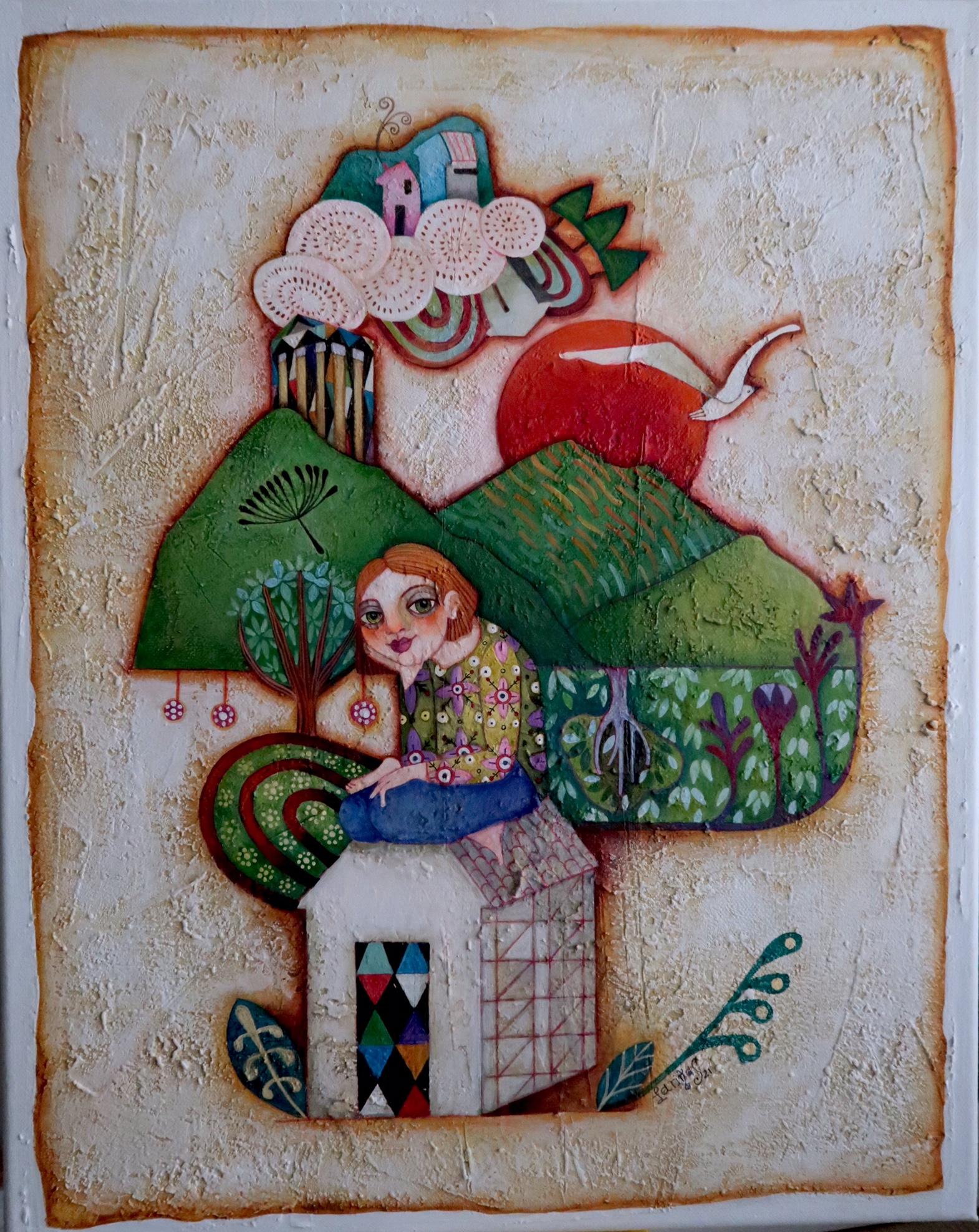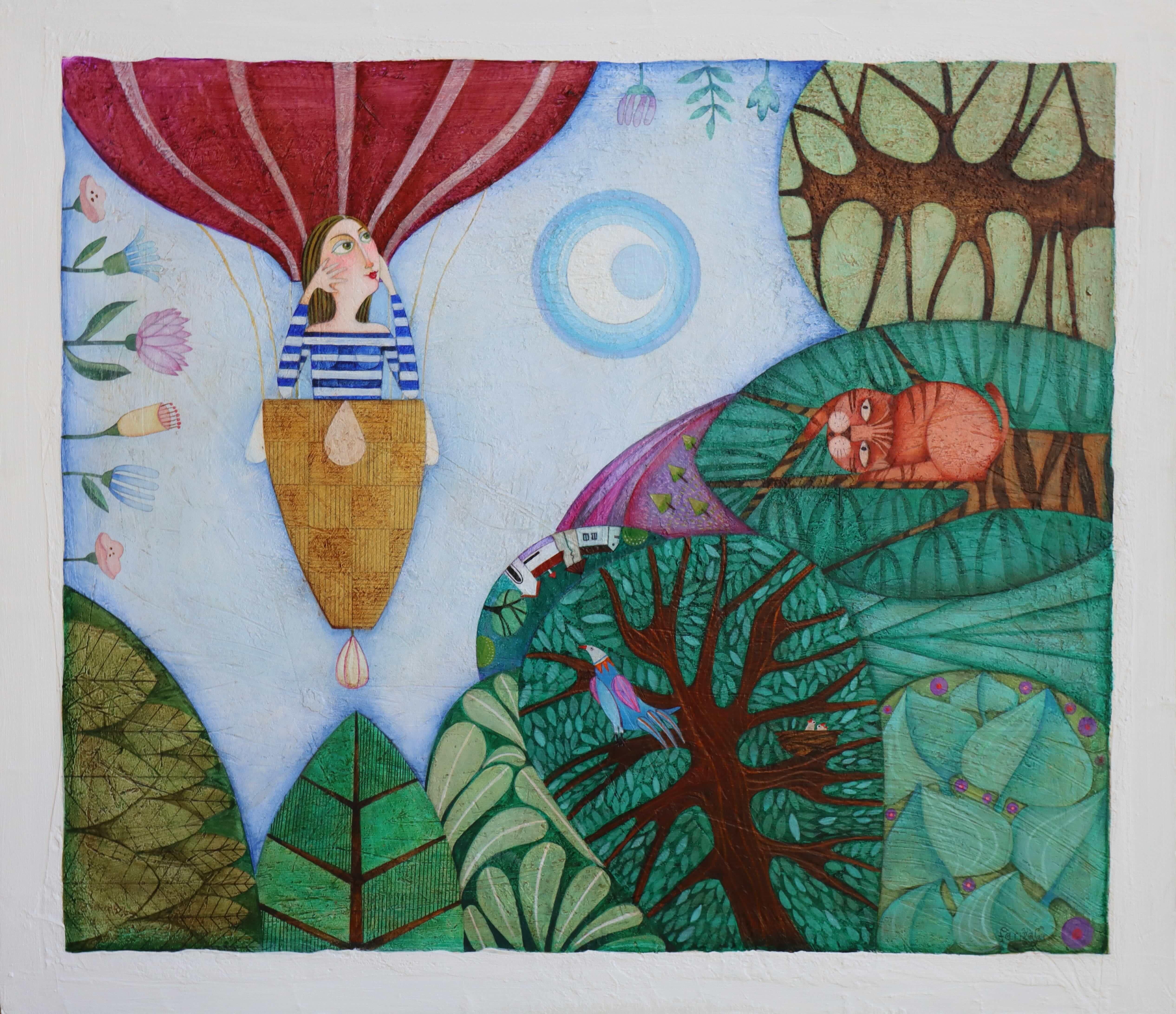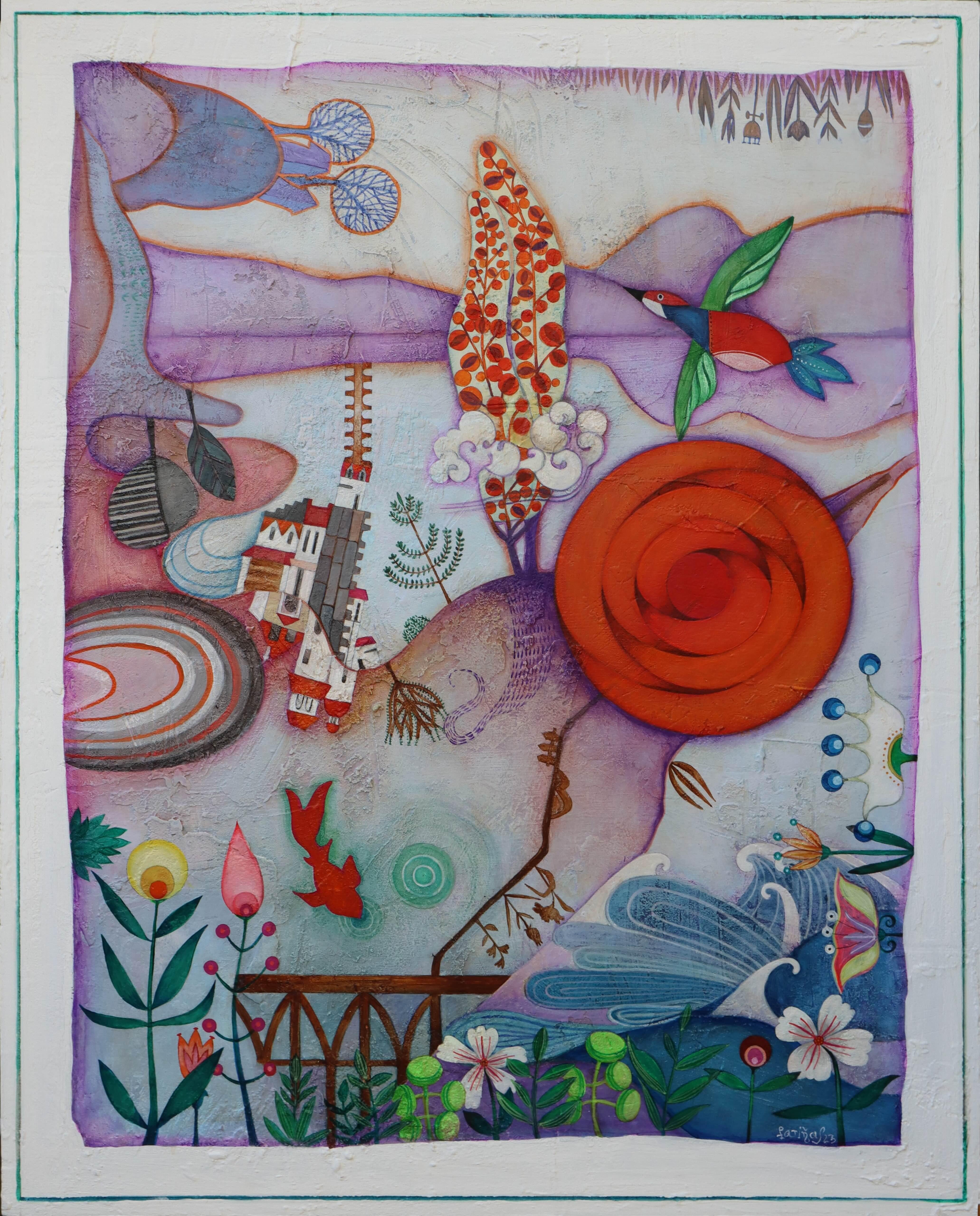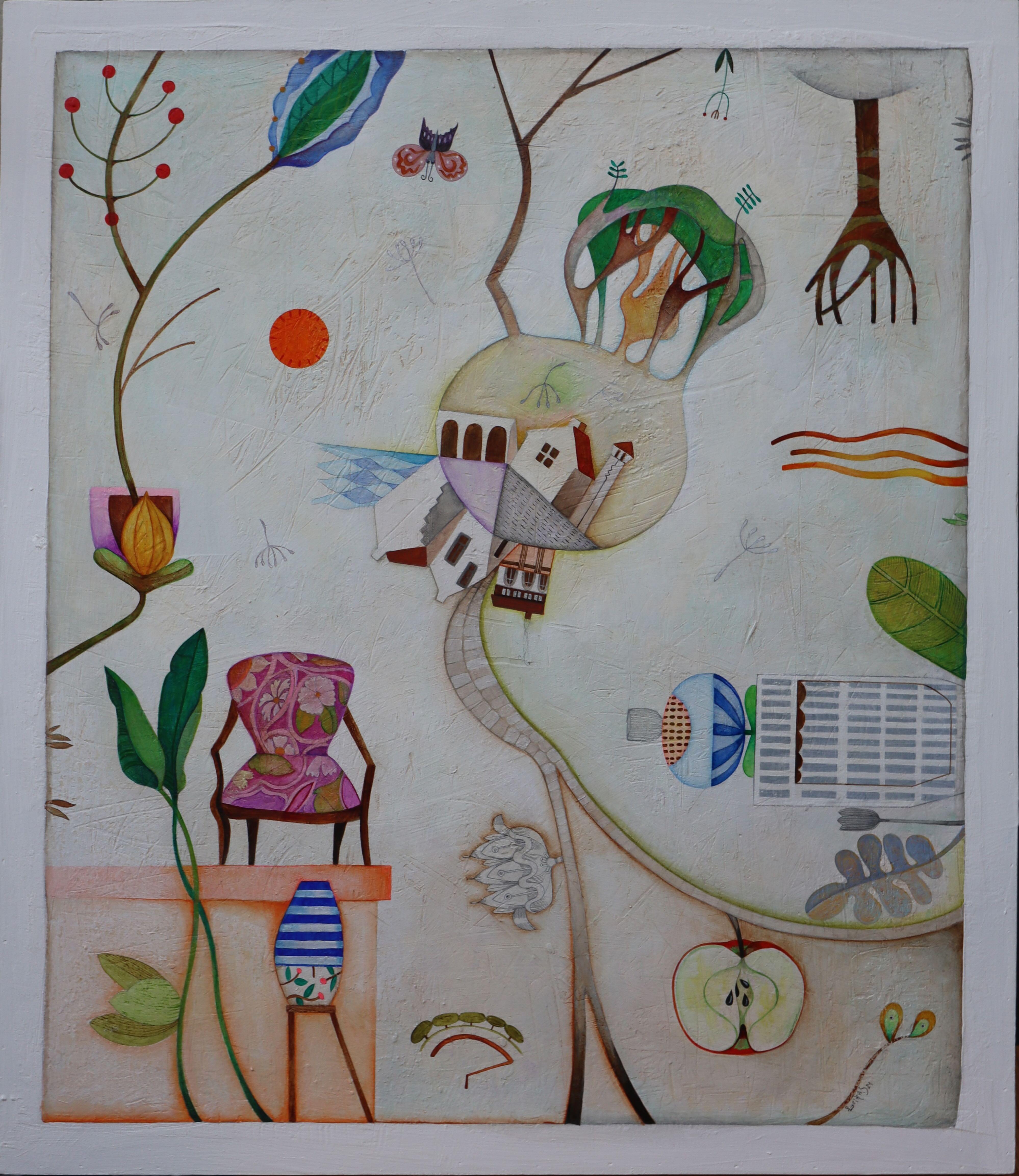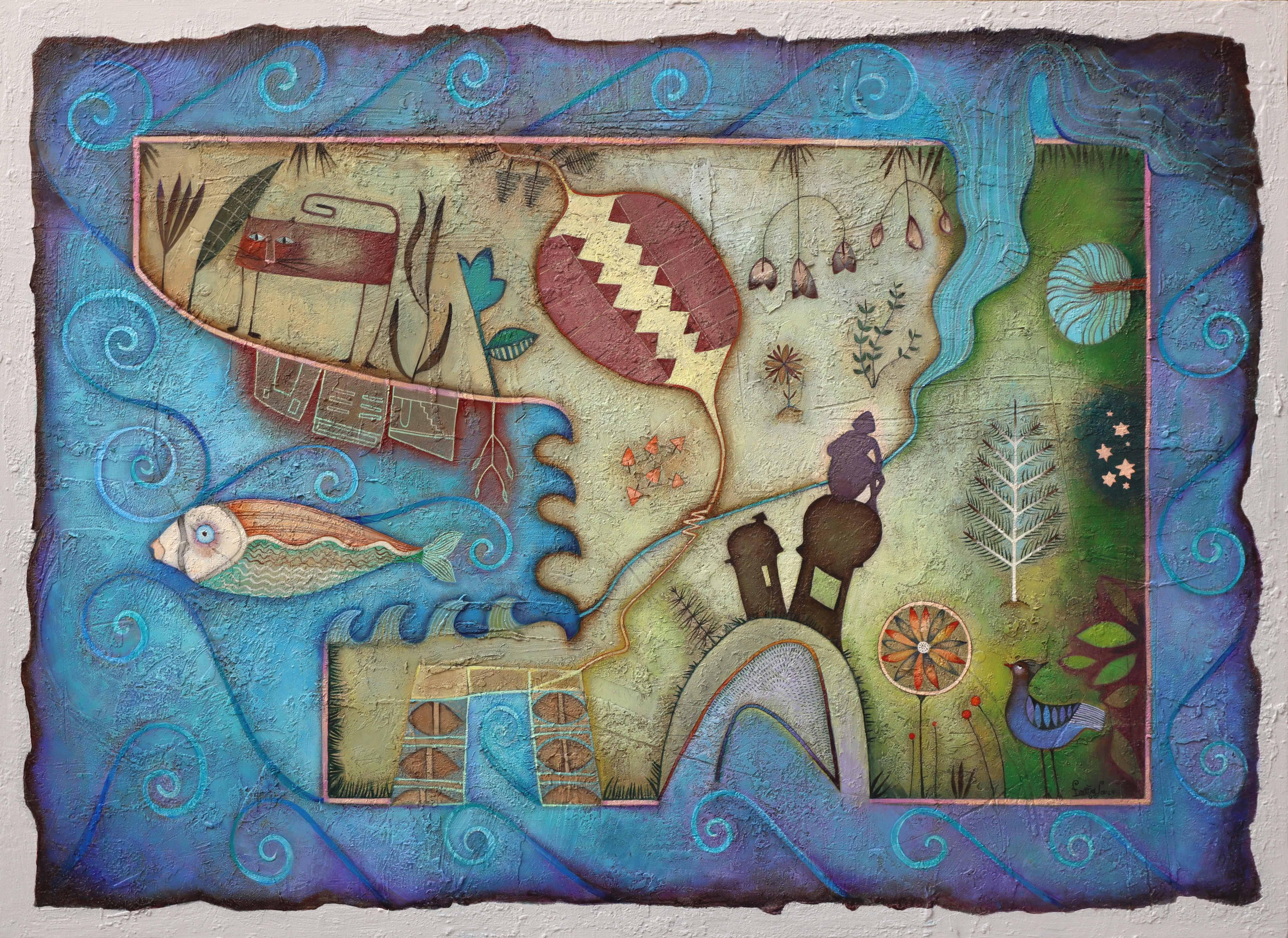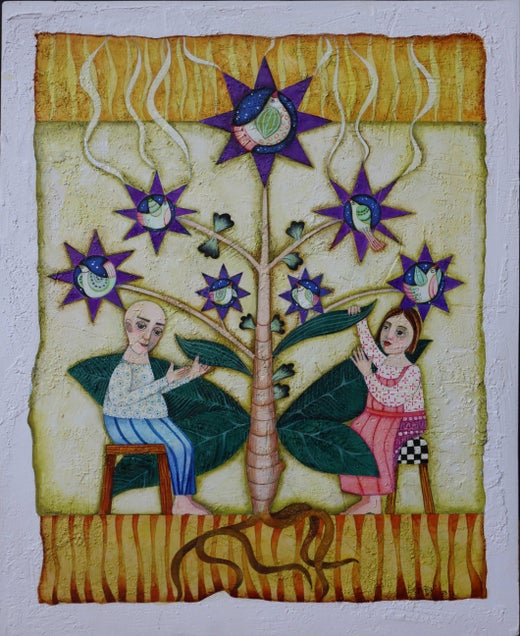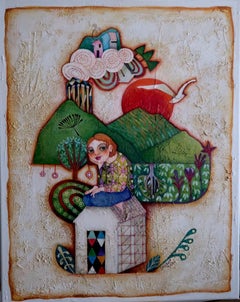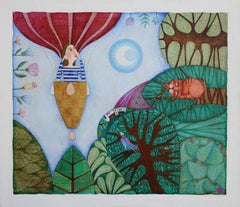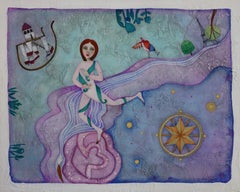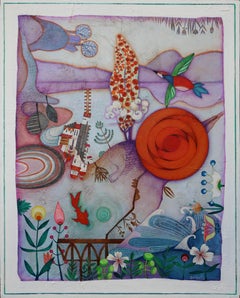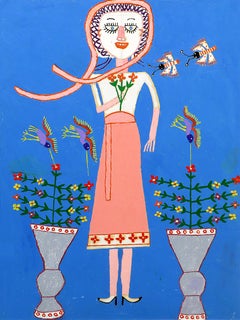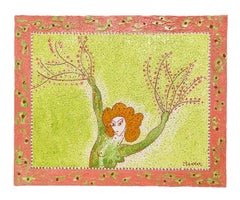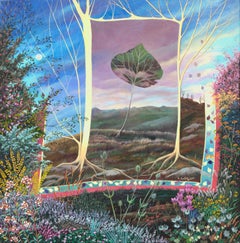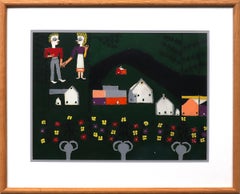Raquel FariñasA breath of fresh air. Symbolic Acrylic paint Folk Art Landscape with figure2023
2023
About the Item
- Creator:Raquel Fariñas (1964, Spanish)
- Creation Year:2023
- Dimensions:Height: 16.93 in (43 cm)Width: 20.87 in (53 cm)Depth: 2.37 in (6 cm)
- Medium:
- Movement & Style:
- Period:
- Condition:
- Gallery Location:Segovia, ES
- Reference Number:1stDibs: LU744311867622
Raquel Fariñas
Raquel Fariñas, Spanish artist, is very famous as an illustrator of the childish comtes. The artist says, “My paintings are the medium that I dispose off to reflect on the reality beyond rational knowledge, to portray the beauty I always seek. When I paint, every element of the reality I am depicting is revealed as a carrier of truth and beauty, which confers them a different sense than its mere appearance or utility. At this conceptual plane, everything is interrelated and I notice another existence that I’m unable to explain with words. Then, everyday life makes sense because I experience, like Rodin, that ‘it exists, above all, what the greatest part of people does not know to see: the unknown depths, the foundations of life’. So, what I can not express in concept, I do it with images, and it is here where the world of symbols appears; the concepts of unveiling and hiding are connected in a symbol. Symbols, myths, dreams reveal what escapes from immediate experience, to consciousness. This is how I create shapes in my art work. In a tree I find the Natural Law of Development and Growth. In the circular, round, the Cyclical Law of the Sun and the Moon, and their celestial movements; the cycles of food and water. Also the fabrics are important: everything is weaved, linked. There is no opposition between up and down, the one is a reflection of the other. To see and to contemplate is not the same. When I paint I attempt to contemplate, and I give this contemplation to other people, who will transform my signs in symbols and my symbols in signs. I never ask to follow my interpretations. You, the viewer, are the creator of a new meaning.”
- ShippingRetrieving quote...Shipping from: Segovia, Spain
- Return Policy
More From This Seller
View All2010s Folk Art Figurative Paintings
Canvas, Acrylic
2010s Folk Art Figurative Paintings
Acrylic, Mixed Media, Wood Panel
2010s Folk Art Figurative Paintings
Mixed Media, Acrylic, Wood Panel
2010s Folk Art Figurative Paintings
Acrylic, Mixed Media, Wood Panel
2010s Folk Art Figurative Paintings
Mixed Media, Acrylic, Wood Panel
2010s Folk Art Figurative Paintings
Mixed Media, Acrylic, Wood Panel
You May Also Like
1950s Folk Art Figurative Paintings
Oil
20th Century Folk Art Animal Paintings
Canvas, Oil
Early 2000s Figurative Paintings
Canvas, Acrylic
Mid-20th Century Folk Art Figurative Paintings
Oil
2010s Surrealist Figurative Paintings
Canvas, Acrylic
20th Century Folk Art Animal Paintings
Canvas, Oil
